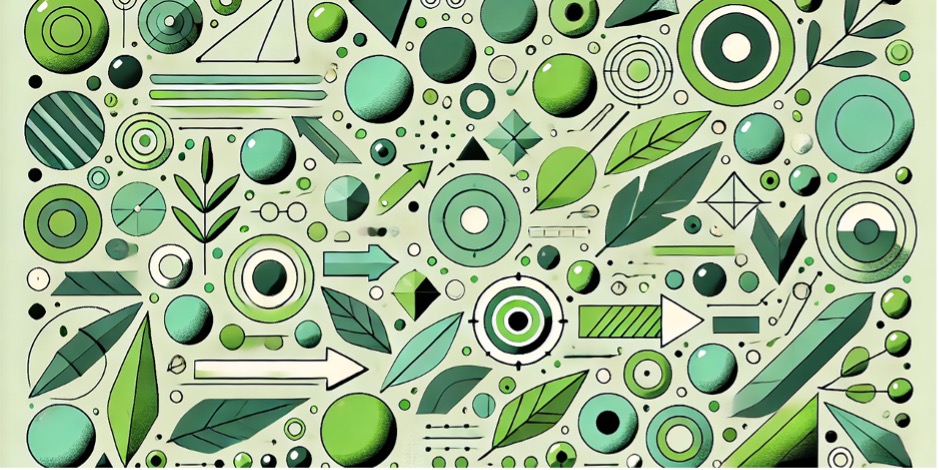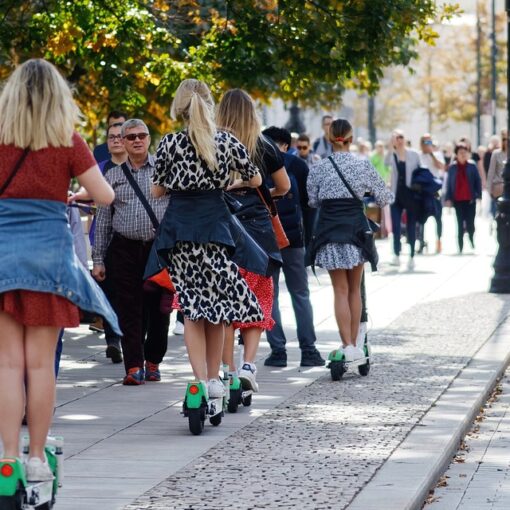Design is well-known for its visual-oriented contributions to companies. For example, designing a product or a website. However, design has much more to offer, especially when it is elevated to work with organizations in their business strategies. The term ‘Strategic Design’ represents this type of work where designers work with visual aspects and expand their work towards solving strategic problems with companies.
As the climate change crisis pushes industries towards greener practices, designers are taking on expanded responsibilities and helping to shape the transition to a more sustainable economy. But how does strategic design support this green transition, and what makes it essential for fostering long-term sustainability?

From traditional design towards strategic design
Strategic design represents an expansion on the type of work done by designers. As illustrated in the ‘Steinberg Funnel’ (see figure below). In traditional design projects, decisions are often limited to specific elements like colours and fonts, whereas in strategic design projects, decisions are broader and more impactful, such as redesigning the onboarding experience in a hospital. The Funnel sets up a comparison between where traditional design work is typically found, on the right side, and where strategic designers operate, closer to the left.

At its core, strategic design applies design principles to “big picture” and more systemic challenges. For example, Manzini and Vezzoli (2003) describe it as an integrated system of products, services, and communication strategies that support sustainable development. As strategic designers, we contribute to the design process and organizational strategies that align with long-term sustainable goals.
The Role of Designers in Shaping a Sustainable Future
The green transition refers to shifting toward an economy that prioritizes sustainability over resource overuse. According to the European Commission (2024), this transition involves fostering sustainable development across sectors like energy, mobility, and the circular economy.
In the current climate crisis context, design without a sustainability perspective becomes irresponsible. Strategic designers play a pivotal role in this shift by integrating sustainability into every phase when developing products and services. The evolving definitions of strategic design highlight its growing responsibilities. No longer limited to creating visual touchpoints, designers are increasingly involved in crafting strategies that address broad societal challenges. As early participants in decision-making processes, designers are uniquely positioned to guide organizations toward sustainable practices. By incorporating environmental and social considerations into the design of products and services, strategic designers help create solutions that not only meet business goals but also promote ecological sustainability.
This post summarizes a recent academic article: ‘Strategic Design for Green Transition: Expanding Designer’s Responsibilites and Impact,’ published in the What’s Around Design International Conference 2024. (A link to the referred academic article)
Author
Paulo Roberto Nicoletti Dziobczenski, Chief Specialist in Strategic Design Innovations at LAB University of Applied Sciences and member of the Design for Futures research group. His work focuses on how strategic design can help organizations foster sustainable growth.
References
Boyer, B. 2020. Helsinki design lab ten years later. She Ji: The Journal of Design, Economics, and Innovation, 6(3), 279-300.
European Commission. 2024. Green Transition. Cited 18 Oct 2024. Available at https://reform-support.ec.europa.eu/what-we-do/green-transition_en
Manzini, E. and Vezzoli, C. 2003. A strategic design approach to develop sustainable product-service systems: examples taken from the ‘environmentally friendly innovation’ Italian prize. Journal of Cleaner Production, 11(8), 851-857.
Links
Link 1. Dziobczenski, P.R.N. 2024. Strategic Design for Green Transition: Expanding Designers’ Responsibilities and Impact. In: What’s Around Design? 2024 International Conference, Portimão, Portugal. Cited 18 Oct 2024. Available at https://www.researchgate.net/publication/384894816_Strategic_Design_for_Green_Transition_Expanding_Designers’_Responsibilities_and_Impact




